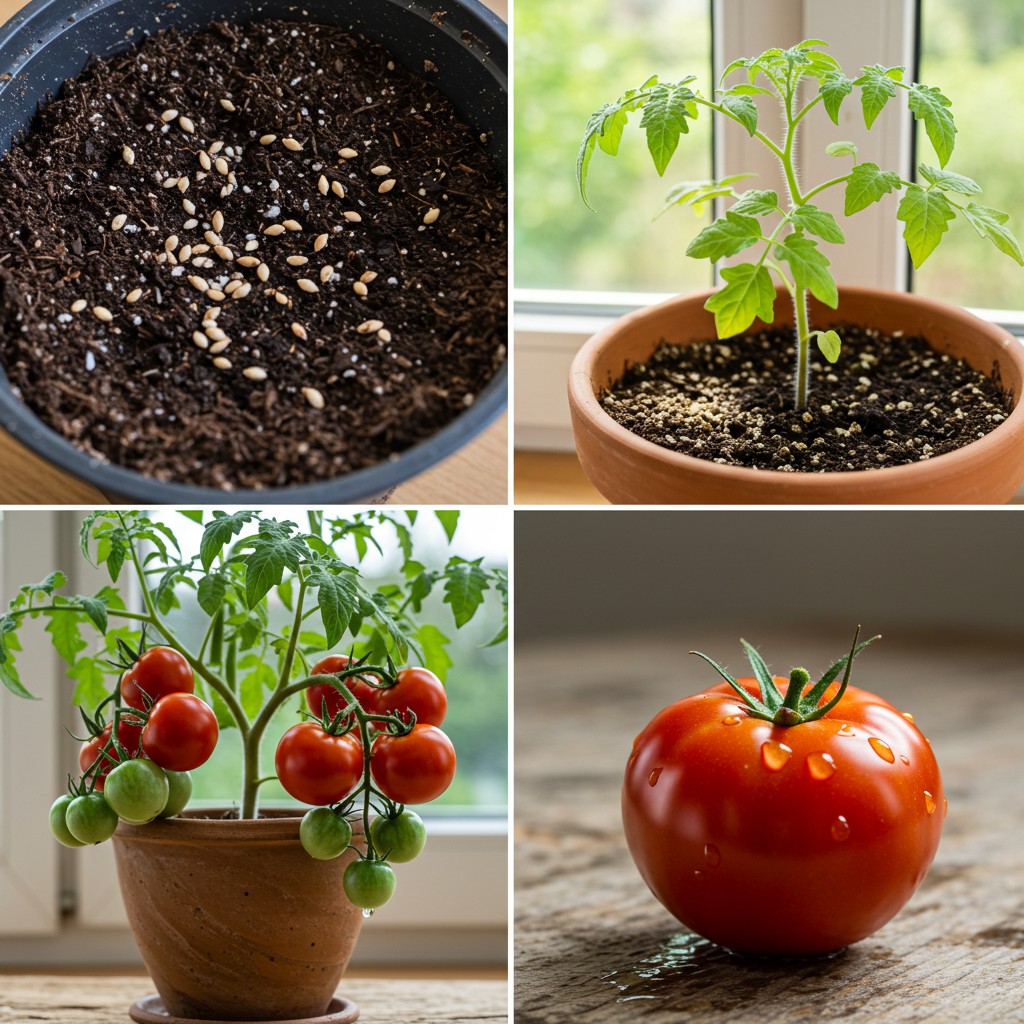Perlite or pumice for aeration
You can also enrich the mix by blending in a slow-release organic fertilizer to provide nutrients over time.
Planting and Positioning
Tomatoes love warmth and sunlight. When planting, bury the seedling deeper than its original container—right up to the first set of true leaves. This encourages additional root growth along the buried stem, resulting in a stronger plant.
Place your containers in a spot where the plants will receive 6–8 hours of direct sunlight daily. South-facing balconies or patios are ideal. If natural light is limited, consider using grow lights to supplement.
Watering and Feeding
Container-grown tomatoes dry out faster than in-ground plants, especially during hot weather. Keep the soil evenly moist, but not soggy. Water in the early morning to reduce evaporation and avoid fungal issues.
Here are some watering tips:
-
-
Water when the top inch of soil feels dry.
-
Use mulch on the surface to reduce moisture loss.
-
-
Avoid getting water on the leaves to prevent disease.
Feed your plants every two weeks with a balanced liquid fertilizer during the growing season. Once fruit begins forming, switch to a low-nitrogen, high-phosphorus fertilizer to boost fruit production.
Supporting Your Tomatoes
Even compact varieties benefit from some support. Use small tomato cages, bamboo stakes, or vertical trellises to help plants stay upright and prevent breakage. Supporting the plant also improves airflow and reduces the risk of fungal infections.
Pollination and Fruit Set
Container-grown tomatoes, especially indoors or on covered balconies, might need help with pollination. Gently shake the flowers or use a soft brush to transfer pollen between blossoms. This small step can make a big difference in your yield.
Harvesting Your Tomatoes
Tomatoes are ready to harvest when they are fully colored and slightly soft to the touch. Avoid picking them when they’re still hard and green unless you’re planning to ripen them indoors.
Check your plants daily during peak season and harvest often to encourage more fruit production. Overripe fruit left on the vine can slow down the plant’s productivity.
Troubleshooting Common Issues
-
-
Yellowing leaves: May indicate overwatering or nutrient deficiency.
-
-
Blossom end rot: Caused by calcium imbalance and inconsistent watering.
-
Pests like aphids or whiteflies: Use neem oil or insecticidal soap.
Regular monitoring and proactive care will help you catch and fix problems early.
Final Thoughts
You don’t need a sprawling garden to enjoy juicy, sun-ripened tomatoes. With the right container, soil mix, and a bit of attention, you can grow impressive harvests right from your patio, balcony, or windowsill. Container-grown tomatoes are not only a space-saving solution—they’re a flavorful reminder that great gardening can happen even in the smallest of spaces.

